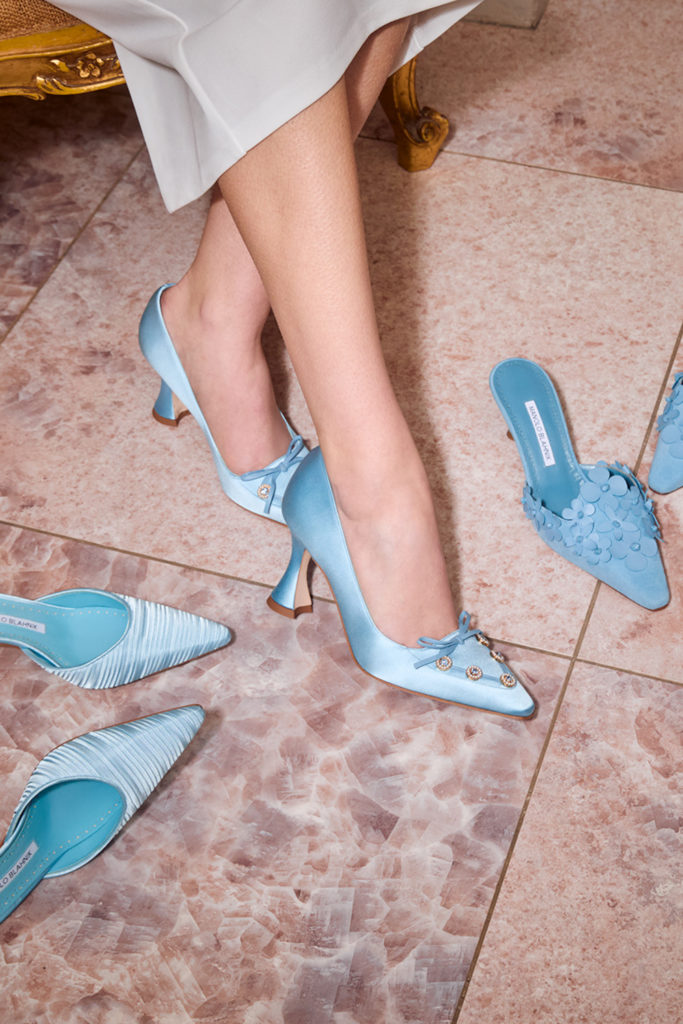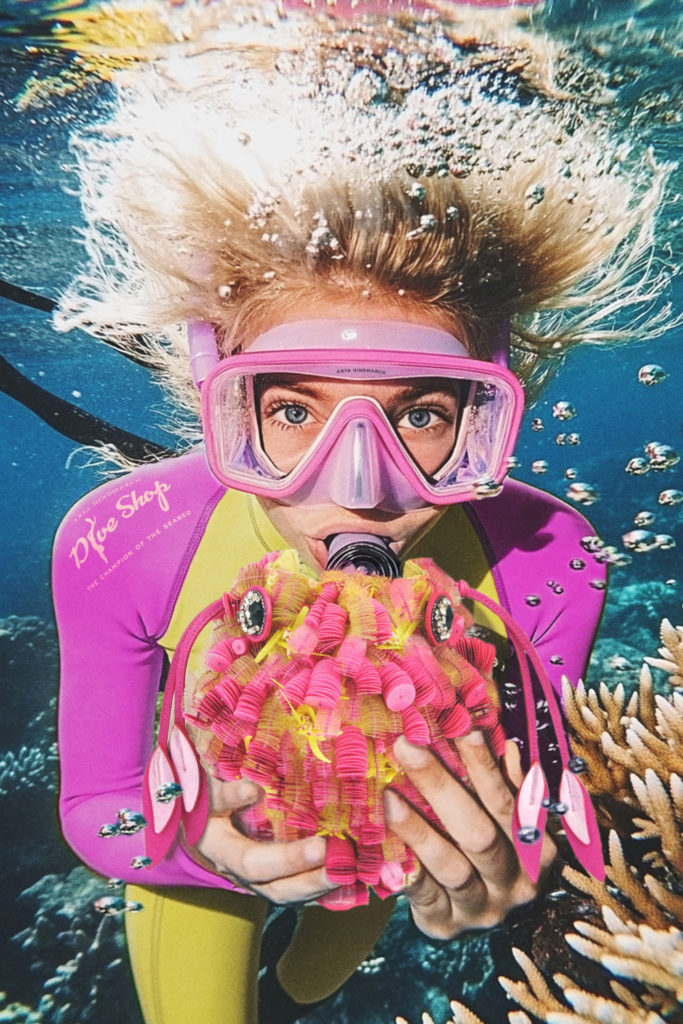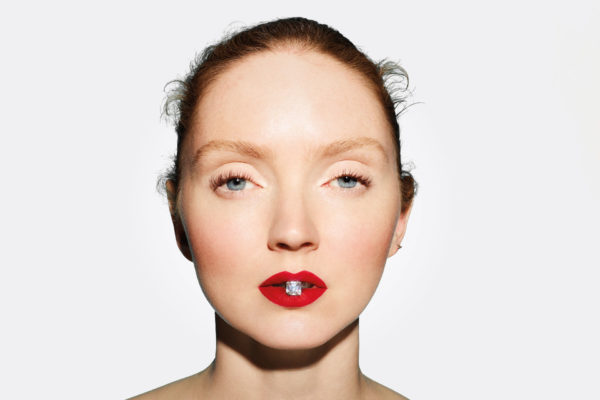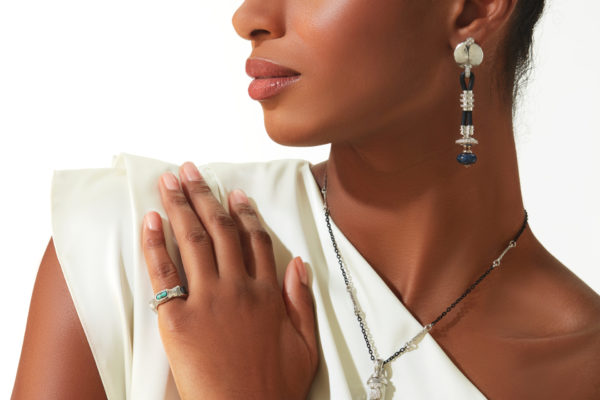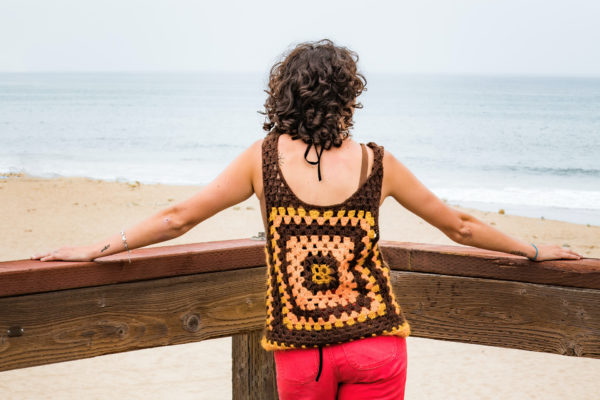How Gold Got Ethical
By
2 years ago
Not all gold is the same
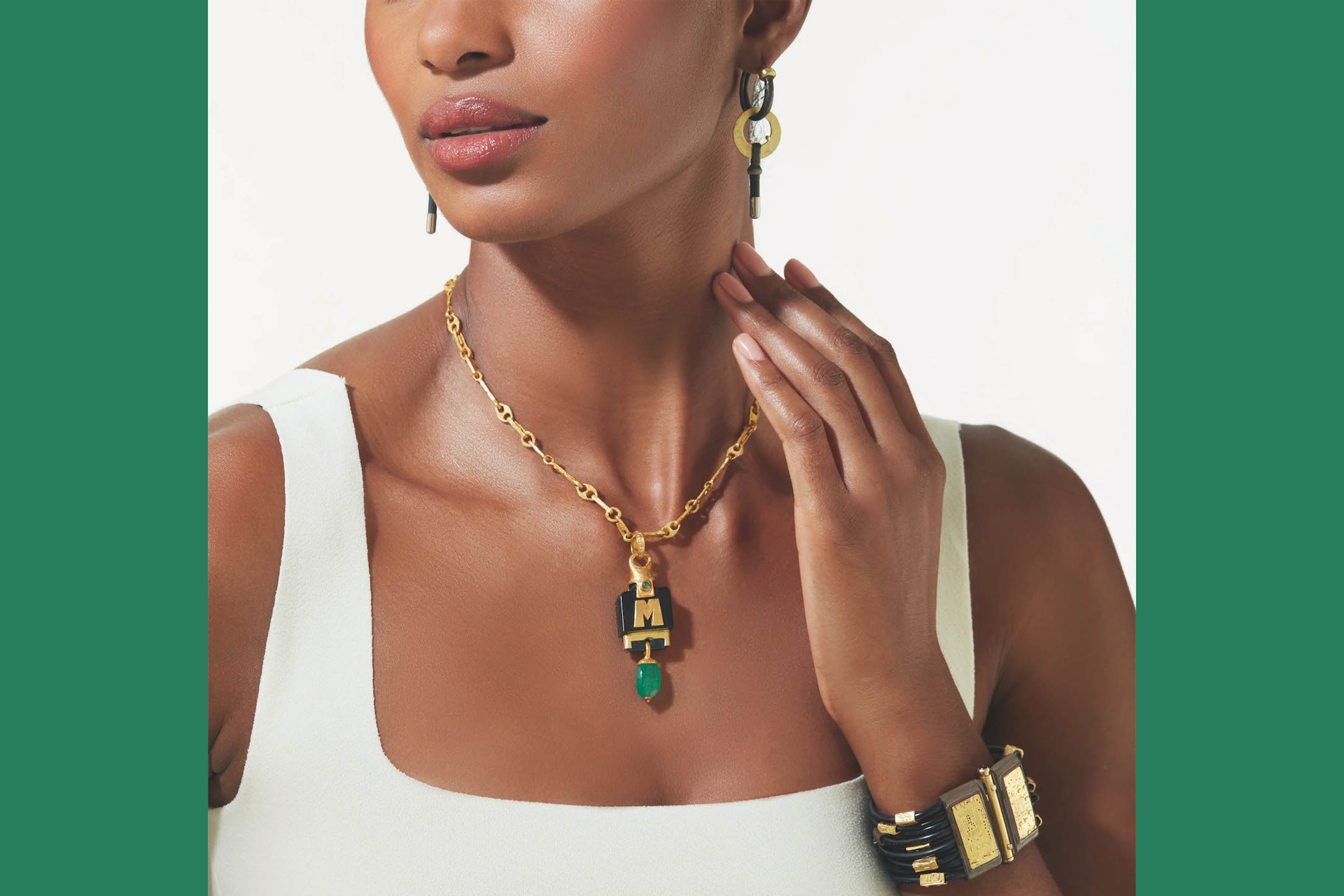
Avril Groom digs deep to uncover the best new sources of ethical gold and other sustainable metals, as well as the jewellers that use them.
Main image: Oushaba
The Search for Ethical Gold
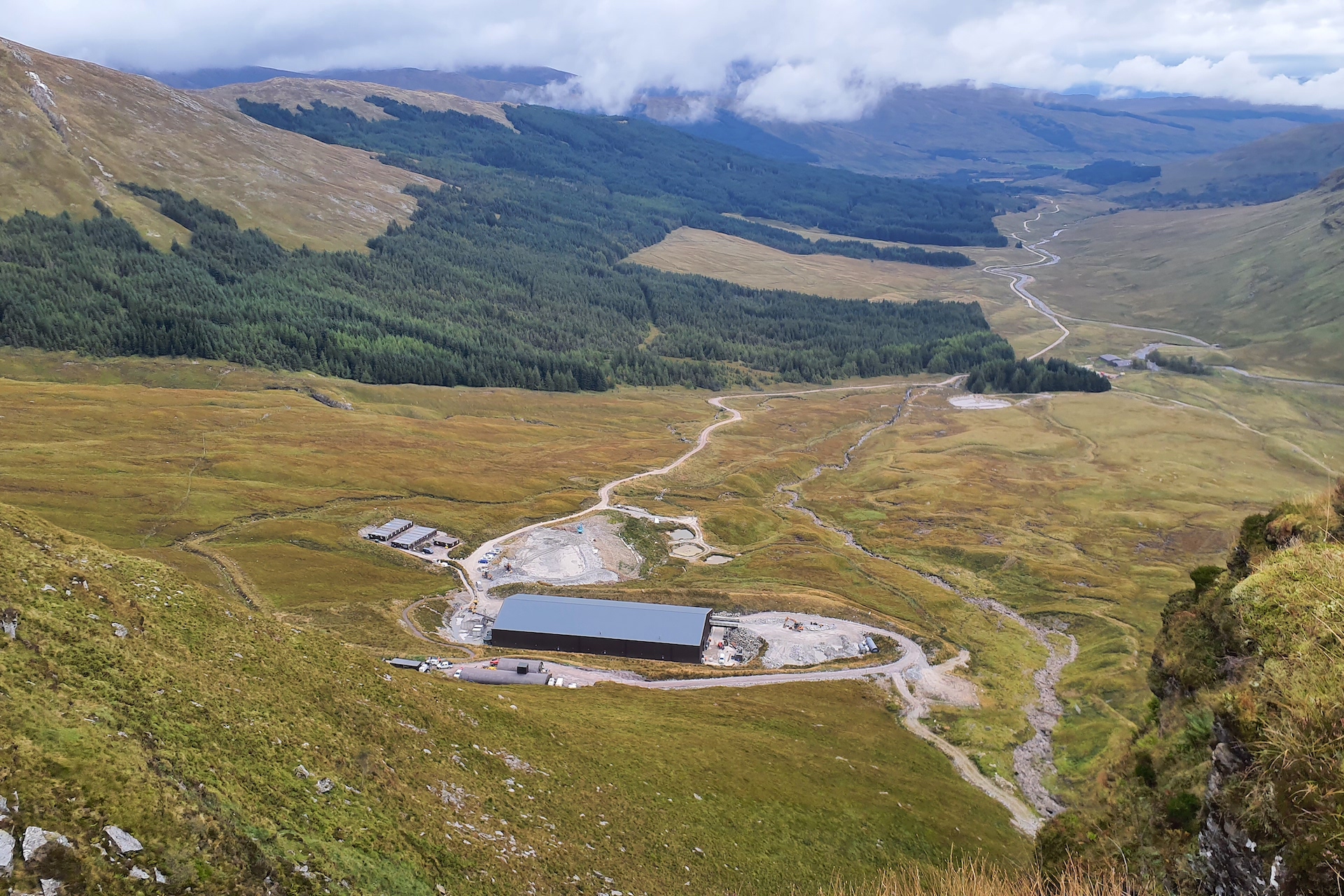
Scotgold’s mine near Loch Lomond
Halfway up a mountain, in an unobtrusive building blending in with the local rock, a silver-gauntleted, masked figure is carefully pouring a stream of smoking, fiery liquid into a small beaker. No wonder the ancients believed in alchemy – after a few minutes’ cooling, there emerges an inch-wide button of pure, yellow gold, as bright and rare as the sunshine outside.
This is Highlands Scotland, in a national park where, at the country’s only commercial goldmine, environmental impact, community benefit and traceability are as key as the metal, which becomes scarce but not inaccessible jewellery, handcrafted in Hamilton & Inches’ Edinburgh workshop.
In Wales, there is different alchemy. At the Royal Mint’s new HQ, jewellery is made from gold created in the UK through a high-tech, room-temperature process that transforms the interiors of discarded mobile phones and laptops. Silver is distilled from redundant X-ray plates and other medical material. Even the plastic that entombs these elements is resurrected. This is the first commercial jewellery project in The Mint’s 1,000-plus year history, but it and Scottish gold are two sides of the same coin.
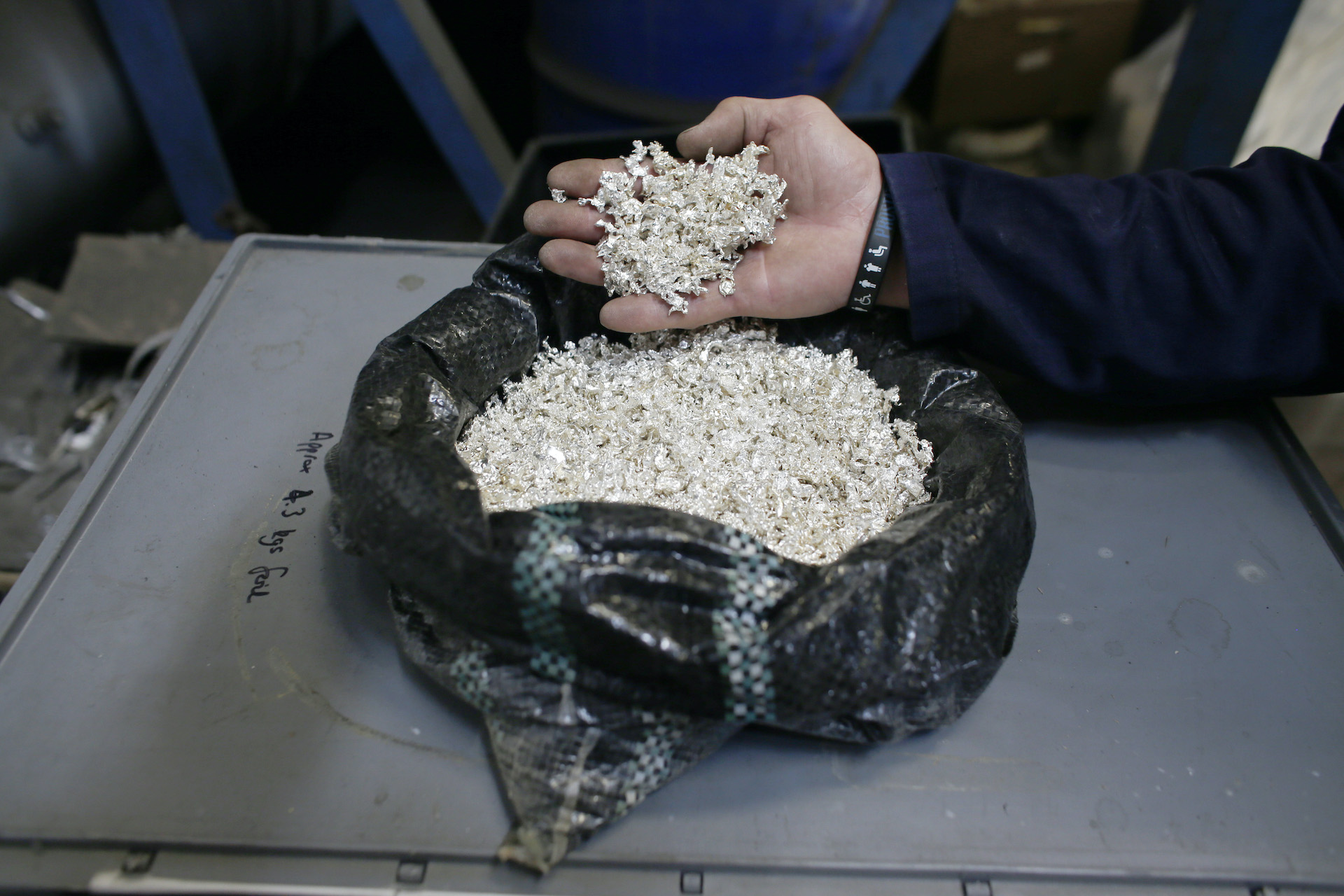
Silver recycled from x-ray plates at The Royal Mint
What is ethical gold?
Since the advent of created gemstones, the claim to sustainability of natural versus man-made has been a battleground. Now attention has turned to precious metal, which in the past has sometimes been a murky area. Consumer attitudes have accelerated change. Clients who like to know their gemstones’ journey may want them set in ethically produced, traceable metal. That demand has reached critical mass – the World Gold Council estimates that 28 percent of gold is now from recycling, of which ten percent is from e-waste – and technology is advancing quickly to satisfy it.
Scottish gold has been known for hundreds of years but Scotgold’s operation near Loch Lomond is something new. Mining in such a sensitive area – and it is a proper mine, tunnelled into a cliff with machinery and blasting, and some smelting on site – was controversial but achievable in a country with strict environmental and working conditions rules. It may close in a decade and eventually leave no trace. With noise and access limits, wildlife is undisturbed. Already the spoil heaps are indistinguishable from natural drumlins – grass-covered hummocks of glacial moraine.
By precious metal standards this is sustainable. With 100 staff, the mine has created local jobs and training for entrants to the industry such as senior underground geologist Rachael Paul, who began with work experience. The smelted gold goes to 263-year-old firm Betts in Birmingham, to be made into an 18-carat alloy that is assayed in Edinburgh and then enters the workshops for the final alchemy of design and craftsmanship.
In traditional areas standards are less clear-cut, especially at artisanal and small-scale mines with safety and pollution concerns. However, change has snowballed since the first Fairtrade and Fairmined initiatives in 2011. Now the Betts family and partners have set up the Single Mine Origin (SMO) initiative in West Africa. ‘It’s not an easy place to work’, says MD Charlie Betts, ‘but we were frustrated with small mines’ exploitative reputation. Ninety percent of the gold workforce is in small or artisanal mines and we can make a difference.’ This means total transparency from mine to jewel for the client, and local benefits – decent wages, education, healthcare, and training – for a post-mining future. They work with one mine in Mali and one in Ivory Coast with plans for two more by year’s end, all in different countries, says Betts, ‘because you never know when political instability may mean suspending operations somewhere’.
Brazilian designer Fernando Jorge – known for his bold but fluid, airy shapes – visited the Ity mine in Ivory Coast that supplies him.
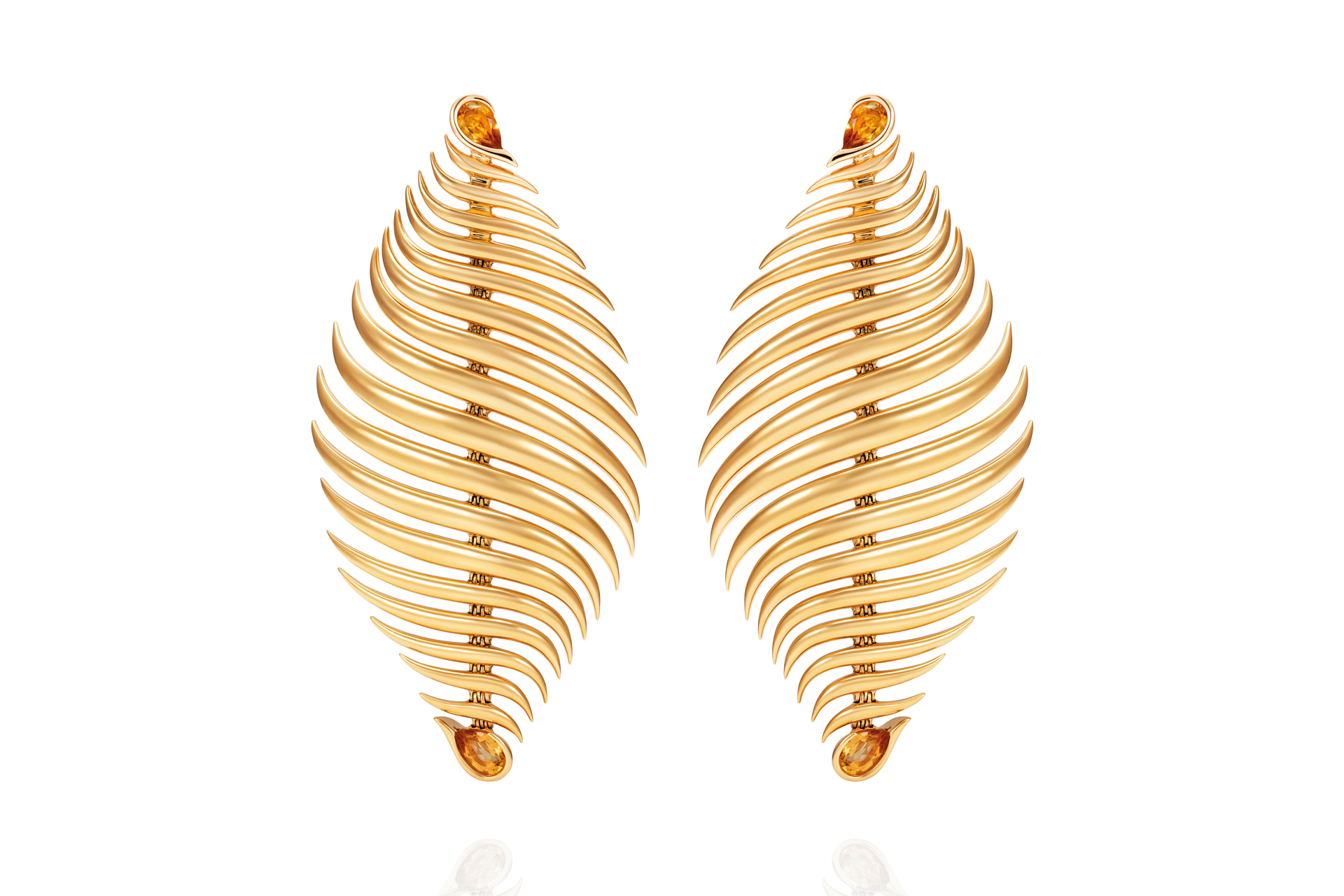
Fernando Jorge Blaze earrings in 18ct SMO yellow gold and citrines, £25,000. fernandojorge.co.uk
‘I learned how they reduce environmental impact and benefit communities’, he says. ‘Most important was connecting with the people and witnessing how my decisions affect them, which has had deep, lasting effects on my work’. Satisfied customers Christie and Rosanna Wollenberg of B Corp-certified, accessible brand Otiumberg say they ‘love that all details, from the mine to our workshop, are on a QR code. We support innovative ideas that improve the industry.’
Also using Ity SMO gold is British-Ghanaian jeweller and V&A curator Emefa Cole, whose bold, new collection, Worth Its Weight, is made from it.
‘Ivory Coast borders Ghana, which made me feel connected – it’s not just accessing the metal but the human stories behind it and its traceability to West Africa where gold has historic significance,’ Emefa says. Pieces were sensationally previewed at this year’s Met Gala by actress, co-host and fellow Ghanaian Michaela Coel.
Because of its scarcity and high ratio of value to volume, gold is relatively small scale to process and therefore controllable. Chopard was the first global luxury brand to commit to ethical gold, starting with Fairmined artisanal gold from two South American mines in 2013. It is now entirely ethical – 60 percent mined, the rest from certified recycling, including its own scraps. Its refinery converts gold grains into bars of its favoured alloys; the impressively precise operation is surprisingly small size.
Is using recycled gold an alternative to ethical gold?
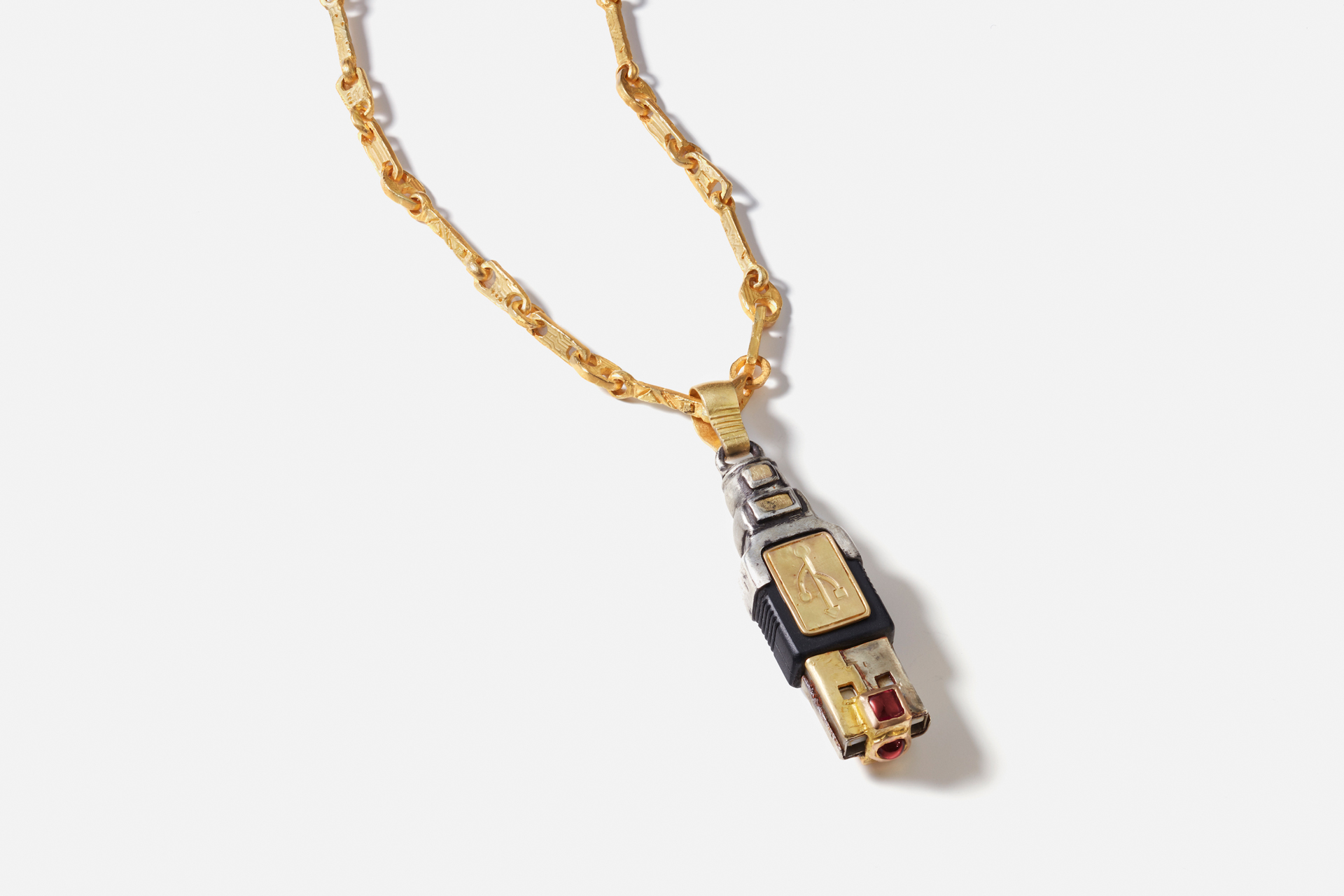
Oushaba USB necklace made out of recycled e-waste, 22ct gold, oxidised silver, rubies, £11,400. oushaba.com
Small scale has advantages for individual designers, who can research trusted suppliers and track their transparency on blockchain, though circumstances can change. Stephen Webster was an early adopter of Fairtrade gold but switched in 2021 to recycled, ‘because of its lower environmental impact, though we still support Fairtrade and offer it for bespoke work’. Limited-edition collaborations are in SMO gold while all silver is recycled, and platinum (on request) comes from a certified refinery harvesting medical and vehicle material.
Goldsmith Eliza Walter founded Lylie in 2017 using only e-waste gold, but customer demand for reshaping family pieces has changed her business model. She now offers to recycle clients’ own redundant gold, collected in a re-usable bag and processed by her supplier. Clients do not expect their ‘own’ gold back but its value is set against their commission.
Conversely, Gillian Carr is out and proud on e-waste with her Oushaba collection, launched this year using tiny circuit boards and other components integrated into gold traditionally worked by Sicilian goldsmiths. The combination of visible high-techery with ancient craft makes for interesting, not immediately recognisable aesthetics reminiscent of the high jewellery, tech-inspired Jack pins in recycled gold and ceramic by Boucheron, owned by Kering, luxury’s leader on sustainability.
Not that recycling is problem free. For her Kinraden collection Danish architect and jeweller Sarah Müllertz uses recycled medical and e-waste silver and recycled Tanzanian mpingo blackwood (offcuts from clarinet production) that can be faceted and polished, for clean-lined, accessibly priced pieces. Gold versions are an upward leap – she only uses 18-carat ‘because the process of recycling to lower gold content takes far more energy’.
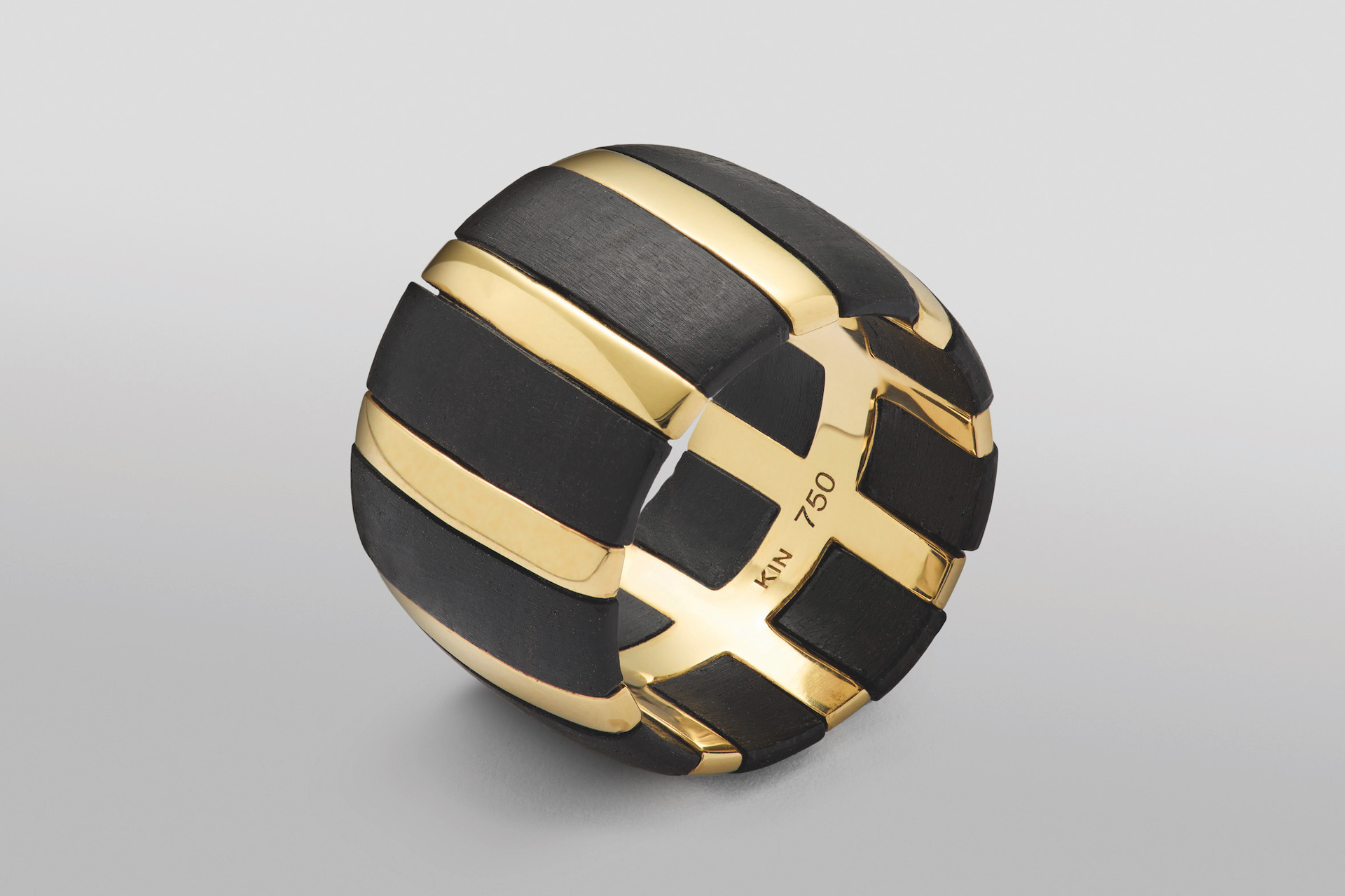
Kinraden Two Worlds Isadora Ring in mpingo wood set with recycled gold, £2,950. kinraden.com
Worry persists about the ethics of pre-recycled materials, but times change. Ruth Tomlinson uses recycled gold for ancient-looking encrusted pieces with antique stones, ocean diamonds found on the seabed and ‘polished’ by wave action, and now semi-polished, traceable Gemfields rubies from Mozambique. Her trusted supplier uses 90 percent jewellery scrap, and audits its supply and resulting pure gold to check its sources. Meanwhile, luxury created stone brand Courbet, which rubs shoulders with the great names on Paris’s Place Vendôme, uses entirely recycled, e-waste gold. ‘We decided that mined gold is inappropriate, and e-waste is less environmentally damaging, which is our priority’, says co-founder Marie-Ann Wachtmeister.
Progress runs from the new willingness to support artisanal mining’s economic and social benefits on one side to technology’s ever-evolving processes and eye on integrity on the other. Hopefully, a golden future awaits, but Mullertz warns: ‘Everyone wants to create circularity in this industry, but today’s young are the first generation looking at an uncertain destiny. This is urgent.’


